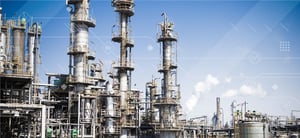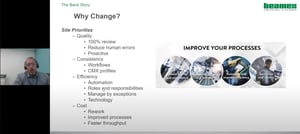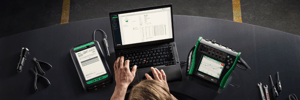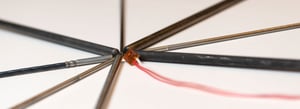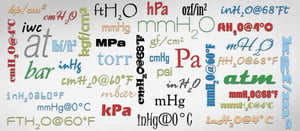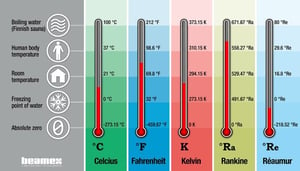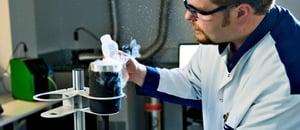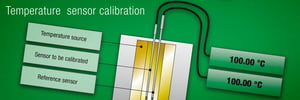One of the questions we get asked most frequently is how often a customer should calibrate his instruments.Unfortunately there is no straight answer to this, at least not one that would always be correct.取而代之的是变量的列表应该be taken into account when deciding the calibration period for any measurement device. Let’s take a quick look at these variables.
Note! There is a newer updated version of this blog post. You can find that at the below link:
How often should instruments be calibrated? [Update]
Many manufacturers provide a recommendation for the measurement device’s calibration period.Or they may have stability specifications given for different calibration periods. Following the equipment manufacturer’s recommendation is an easy and good starting point.
When you install a measurement instrument into your process, it is important to know what the accuracy requirements for that specific installation location are. Not all the places in a factory where you install similar transmitters have the same accuracy need.The installed equipment’s specifications compared to the need of the installed location will affect the calibration period. If you install a very accurate transmitter into a location that does not have a high accuracy need, it can be calibrated less often. You don’t always have to follow the specifications of that installed equipment.
The criticality of a measurement location is one important factor related to the calibration period.The more critical locations should naturally be calibrated more often than the less critical location.
The workload or operating conditions of a measurement device will also affect how often it should be recalibrated. If used very often and/or in very harsh operating conditions, it is good to calibrate it more often.
The stability history of a device is also an important aspect.If you have a long history of a device and it is found to be very stable, it can be calibrated less often. And on the contrary, if the history shows that the instrument drifts and often fails in recalibration, it should logically be calibrated more often. Acalibration softwarecan help to easily show the history trend automatically and will therefore help to make the analysis. Doing it manually may require a lot of work.
In some areas there are regulatory requirements, standards or quality systems that specify how often instrument should be calibrated. It’s tough to argue with them.
In some applications the costs of a failed recalibration are so high that it becomes cheaper to calibrate more often than to let the instrument fail.This is specially the case in pharmaceuticals, food and beverage, and other regulated industries, or in any critical location.
In many industries the quality of the final product cannot be proven by measuring the final product. Instead, various measurements needs to be performed during the manufacturing process. These measurements needs to be maintained accurately with periodical calibrations.
These above principles can be applied for any kind of measurement device, weather it is a process transmitter or a reference standard.
 Figure 1. The figure illustrates the maximum error of an instrument during time. Each bullet point indicate a calibration point, and every time the instrument was calibrated it was also adjusted to have 0% error. The figure shows that in the beginning the drift is smaller than the allowed error limit (the red dotted line), and that the drift diminishes each time. Based on this, the calibration interval period has been prolonged. However, after a few longer intervals the drift has started to grow again, and therefore, the interval has been shortened. Even though the interval was shortened the drift seems to have gotten worse, and this means that it would be time to have the instrument replaced.
Figure 1. The figure illustrates the maximum error of an instrument during time. Each bullet point indicate a calibration point, and every time the instrument was calibrated it was also adjusted to have 0% error. The figure shows that in the beginning the drift is smaller than the allowed error limit (the red dotted line), and that the drift diminishes each time. Based on this, the calibration interval period has been prolonged. However, after a few longer intervals the drift has started to grow again, and therefore, the interval has been shortened. Even though the interval was shortened the drift seems to have gotten worse, and this means that it would be time to have the instrument replaced.
This topic gets me going and I could write much more, but could you read much more, or could you even read this much… ;)
The idea of this blog is to keep stories pretty short, so that is all for now.
Yours in blog,
海基
海基Laurila is Product Marketing Manager at Beamex Oy Ab. He started working for Beamex in 1988 and has, during his years at Beamex, worked in production, the service department, the calibration laboratory, as quality manager and as product manager. Heikki has a Bachelor's degree in Science. Heikki's family consists of himself, his wife and their four children. In his spare time he enjoys playing the guitar.





![Working workshop wonders with Endress+Hauser [Case Story]](https://2203666.fs1.hubspotusercontent-na1.net/hub/2203666/hubfs/Beamex_blog_pictures/Endress+Hauser%20.jpg?width=300&name=Endress+Hauser%20.jpg)
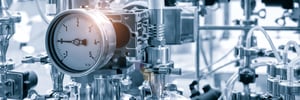
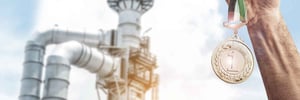
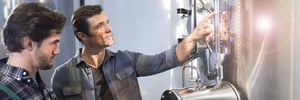
![Stepping on the gas with the UK’s National Grid[Case Story]](https://2203666.fs1.hubspotusercontent-na1.net/hub/2203666/hubfs/Beamex_blog_pictures/23GrainLNGTerminalL.jpeg?width=300&name=23GrainLNGTerminalL.jpeg)
![Calibration Management and Software [eBook].](https://2203666.fs1.hubspotusercontent-na1.net/hub/2203666/hubfs/Beamex_blog_pictures/Calibration%20software%20ebook%20Beamex.jpg?width=300&name=Calibration%20software%20ebook%20Beamex.jpg)

